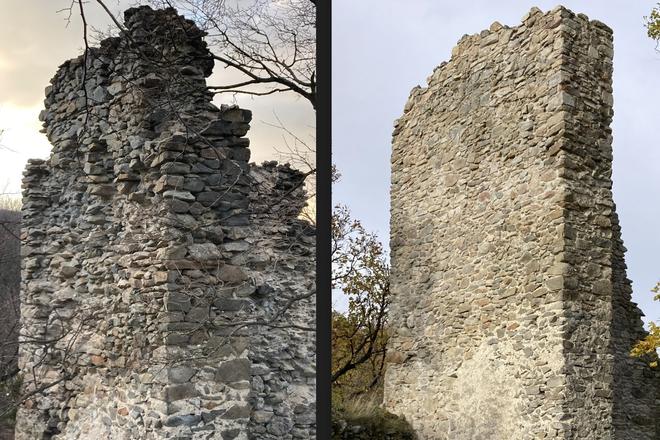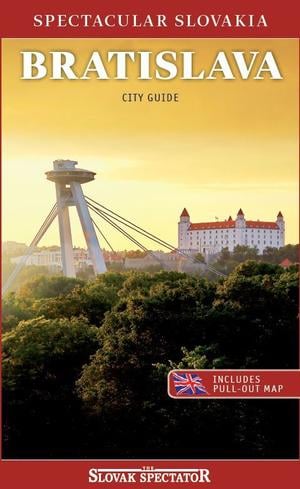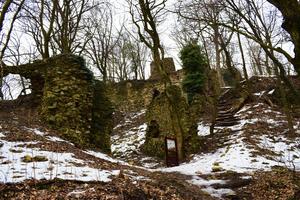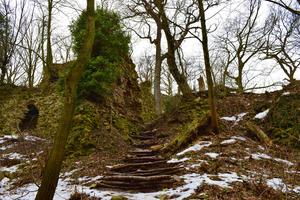Biely Kameň (White Stone) Castle, the ruins of which can be found in the hills above Svätý Jur, a small town near Bratislava, was constructed some time before 1271 and served as the seat of the Counts of Saint George who then lived in Svätý Jur and nearby Pezinok.
Biely Kameň, also known as Waisenstein in some historical sources, is not the original name of the castle. In mediaeval documents, the castle was referred to as Castrum Sancti Georgii, meaning the Castle of Saint George.
In some sources, it is also mentioned as Neštišský Zámok, after the village of Neustift, now Neštich, which was founded directly beneath it by its owners. The name Biely Kameň is much newer and derives from the whitish colour of the granite from which it is mostly built.
Throughout its history, only three sieges of the castle are known to have occurred, all of which ended in the castle's capitulation. In 1271, Czech king Přemysl Otakar II took the castle, and in 1287 came Austrian Duke Albert I of Habsburg. It was last conquered in 1385, after an invasion by the army of the Moravian margraves Prokop and Jošt.
Hidden in the mountains
"Although it may not seem so, because Biely Kameň is thoroughly hidden in the Little Carpathian forest, it is one of the largest Slovak castles. It has a built-up area of up to 1.3 hectares, which is about five to ten times the built-up area of well-known castles such as Šášov, Revište, Blatnica or Lednica," said Monika Winczerová from the Civic Association Castrum Sancti Georgii, which was established just a few years ago.
The association's volunteers have been toiling to preserve what remains of Biely Kameň, and have accomplished more in the past three years than any previous effort, Winczerová said. "The walls are in a truly desolate state. Stones fall out of the walls spontaneously, sometimes a piece of the wall collapses, or the dilapidated vault of the underground cellar collapses. Therefore, the scope of necessary stabilisation and conservation work is enormous," she added.
Given that Biely Kameň is still in the early stages of restoration, it is in a critical condition from a structural point of view and can actually be quite dangerous. The area is freely accessible, meaning it is not fenced off.
"It should be realised that Biely Kameň is not officially open to the public, and entry is solely at one's own risk," she said.
Guided tours are being considered
Once volunteers manage to stabilise the key structures of the castle, they plan to offer guided tours. Later on, pottery markets, demonstrations of period crafts, or martial arts exhibitions could follow.
Biely Kameň is located about 10 kilometres from Bratislava, in the forests of the Little Carpathians, just above the ancient winemaking town of Svätý Jur.
From Svätý Jur railway station, you can reach it by following the blue walking trail uphill, towards the town; upon reaching the Neštich district, visitors should turn onto the yellow trail, which leads directly to Biely Kameň. Most walkers will be able to reach the castle within one hour.
© MY Trnava


 The castle walls, hidden among the forested hills of the Small Carpathians. (source: FB Hrad Biely Kameň)
The castle walls, hidden among the forested hills of the Small Carpathians. (source: FB Hrad Biely Kameň)
 Lost in Bratislava? Impossible with this City Guide! (source: Spectacular Slovakia)
Lost in Bratislava? Impossible with this City Guide! (source: Spectacular Slovakia)


